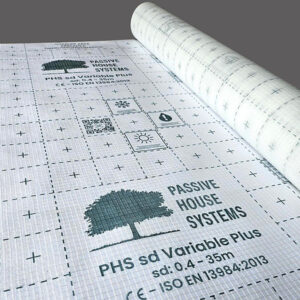
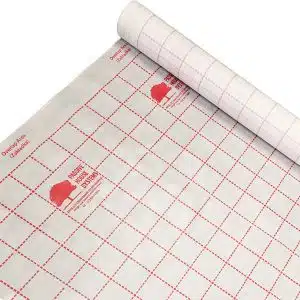
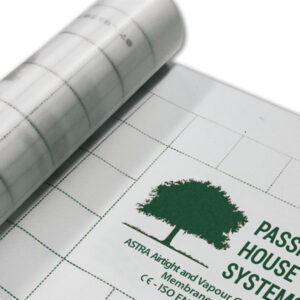
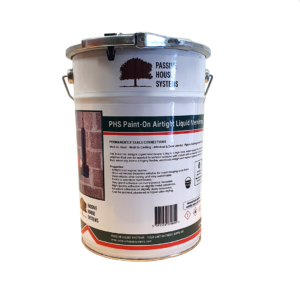
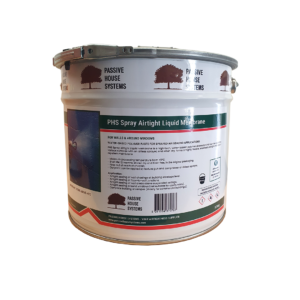
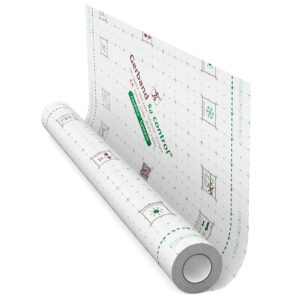
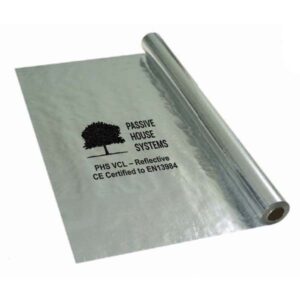
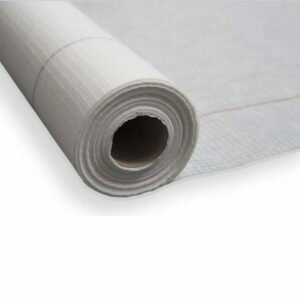
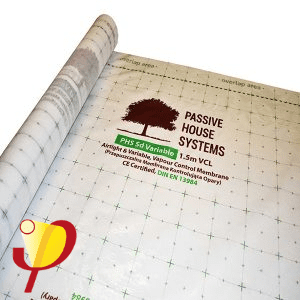
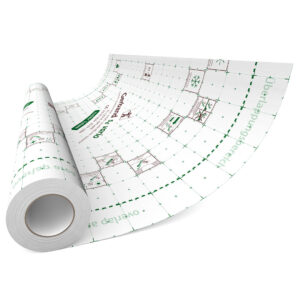
An air tightness membrane is a material used to create an airtight seal to prevent air leakage. Airtightness membranes are popular with constructions as they help build up energy efficiency for a building by preventing the loss of heat caused by air leakage. Air tightness membranes are typically made of polyethylene or polyurethane and are available in various thicknesses.
When selecting an airtightness membrane, it is essential to consider the climate and the specific application. For example, choosing a thicker air tight membrane in cold climates is vital to prevent condensation and frost damage. In addition, airtightness membranes must be installed correctly to be effective. Improper installation can result in gaps and leaks, negating the airtightness membrane.
An airtightness membrane is a thin, impermeable sheet that blocks air passage through cracks and openings in a building envelope. This can help to improve the energy efficiency of a building, as less heat will be lost through air leakage. Airtightness membranes are often used with other insulation materials, such as batts and spray foam, to create a more effective barrier against heat loss. When selecting an air tightness membrane, it is essential to consider the climate in which the building will be located, the type of construction and the intended use of the space. In general, airtightness membranes should be installed by a trained professional to ensure a proper seal.
Airtightness membranes are an essential part of any energy-efficient building envelope. They are typically made of a thin, lightweight material mounted on the envelope’s interior side. Airtightness membranes are designed to prevent air leakage, accounting for a significant amount of heat loss in a building. In addition, airtight membranes are also vapour permeable, allowing water vapour to pass through while preventing air leakage. This is important as it will enable the building envelope to “breath” and prevents condensation from forming. Vapour permeability is a crucial factor in the performance of airtightness membranes, and it is an important consideration when selecting a membrane for a particular application.
There are two main types of airtightness membranes
Breathable-airtightness membranes are typically made of fabrics, while non-breathable membranes are usually made of plastics.
Airtightness membranes are used to block air leakage in buildings. They vary in thickness from 40 to 1000 microns. Breathable-airtightness membranes are usually thinner than non-breathable membranes. Airtightness membranes are made of different materials, including plastic films, aluminium foil, and glass fiber mats. The most common type of airtightness membrane is plastic film. Airtightness membranes are installed outside the building envelope, between the exterior cladding and the insulation.
Vapor permeability is essential for an air tightness membrane, allowing water vapour to pass through the material. This is essential for the “breathability” of the building envelope, as it allows moisture to escape from the interior of the building. However, Vapor permeability is also critical in determining how well a membrane will resist water penetration.
Waterproof materials are essential in various applications where water resistance is necessary. Common examples include clothing, outerwear, tires, and roofing. Waterproof materials are typically made from synthetic materials such as rubber or plastic. These materials are often treated with a waterproof coating to improve their water resistance. Airtight membranes are another type of waterproof material. These are commonly used to prevent air leakage in buildings and other structures.
There are many benefits to using an air tightness membrane in construction, such as:
Improved energy efficiency: An airtightness membrane can help to improve the energy efficiency of a building by preventing heat loss through air leakage.
Reduced condensation: An air tightness membrane can help to reduce condensation by allowing the building envelope to “breath.”
Enhanced durability: An airtight membrane can help to improve the durability of a building by preventing water and air leakage
Improved indoor air quality: An air tightness membrane can help to improve indoor air quality by preventing outdoor air from entering the building
An airtightness membrane is a versatile and effective way to improve the energy efficiency of a building. It can also help to reduce condensation and improve indoor air quality. An airtightness membrane is most used in construction but can also be used in the house. When selecting an air tightness membrane, it is essential to consider the thickness, vapor permeability, and waterproofness of the membrane.
Office
Passive House Systems
Unit 5B4
Link Road Business Park
Ballincollig.
Co. Cork, P31 W950
OFFICE HOURS
Monday-Friay: 8am – 5pm
Office Breaks:
1pm – 1.30pm